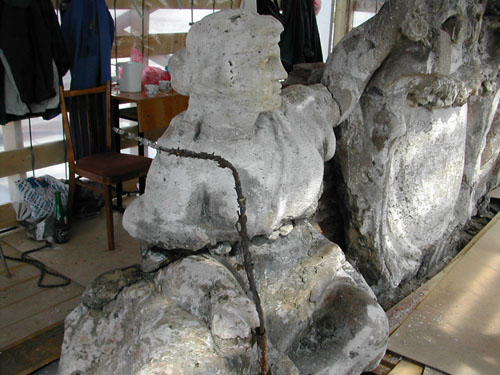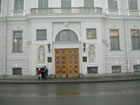Sculptural composition "Virtue"
Sculptor I.P. Prokofiev, XVIII century.
Complex research of Pudostsky limestone state in the Sculptural composition "Virtue" in attic of I.I.Betzkoy House.

Pudostsky limestone is a traditional sculptural material in architecture of old St. Petersburg. This type of limestone stone can be intensively destroyed by different biological objects. It is important to know the main reason of damage processes as well as the composition of biodestructors and degree of their dangerous for monument.
Here we represent the results of the complex research the sculpture state before the restoration. The main attention has been given to the biological agents of the limestone destruction.
The samples were selected by special methods in the places with attributes of rock damages and biological colonization. The special attention was given to the monument parts with the most intensive damage appearance: deepenings, cracks exfoliation of monument elements. The samples were investigated by the complex methods in Saint Petersburg State University. The samples of surface degradation were analyzed by scanning electronic microscopy method. The main aim of microbiological tests was the identification of microorganism (micromycetes and bacteria) and evaluation of aggressive and structure of lithobiotic community.
As result it was shown that the Sculptural composition "Virtue" had a high degree of destruction connected with biodestruction processes. The basic forms of destruction were the different crusts, deepening and cracks which were determined by the concentration and activity of microorganisms. The micromycetes had a considerable diversity – 26 species. Most of them are known as active biodestructors of different building materials. Dominant micromycetes were Penicillium spp. The high frequency in the samples of damaged limestone demonstrated the Cladosporium spp. (88%). The most concentration of bacteria was observed in the samples of the gypsum crust. The lichens and moss had the local development in the limestone connected with the relief of the monument surface.


